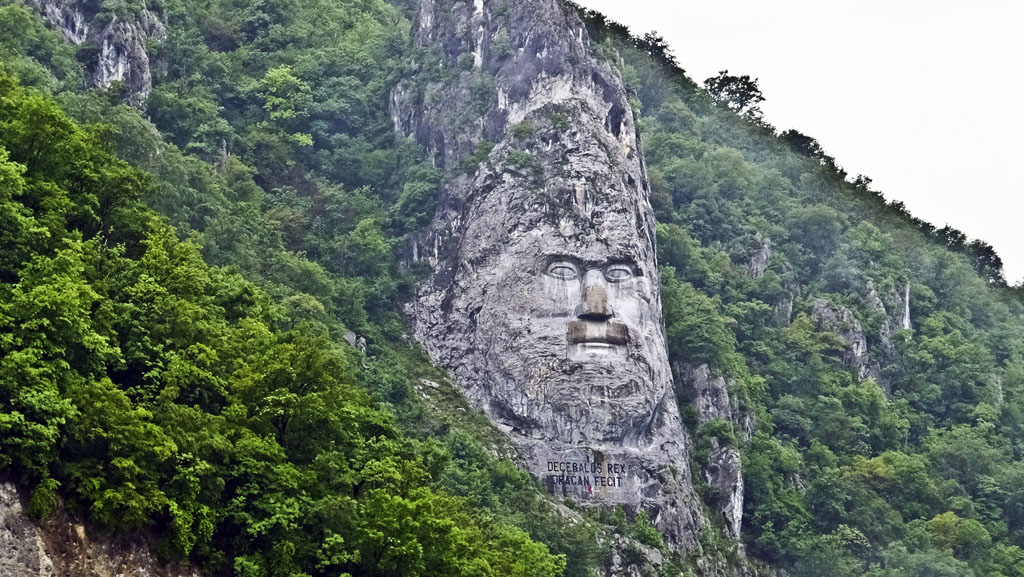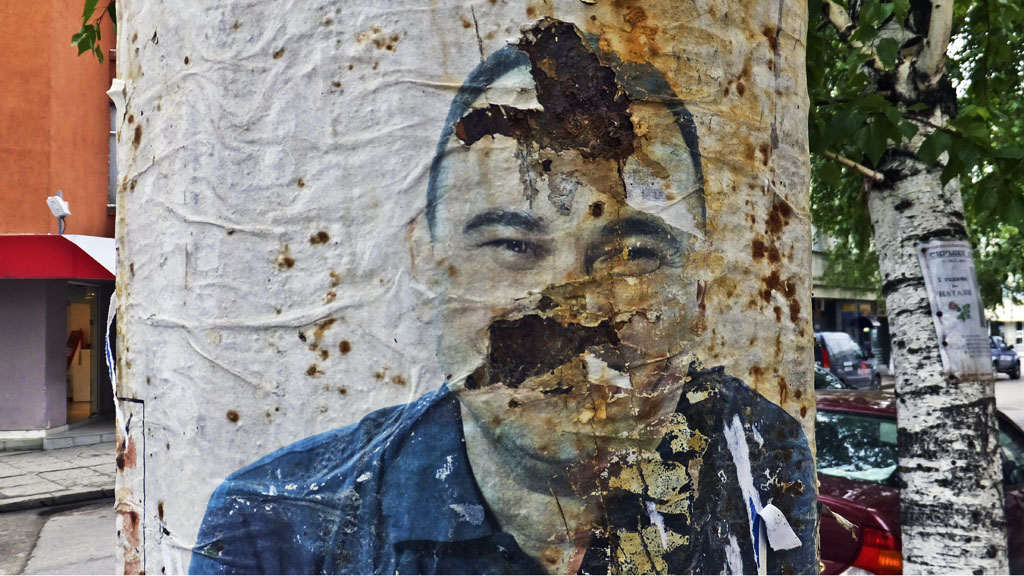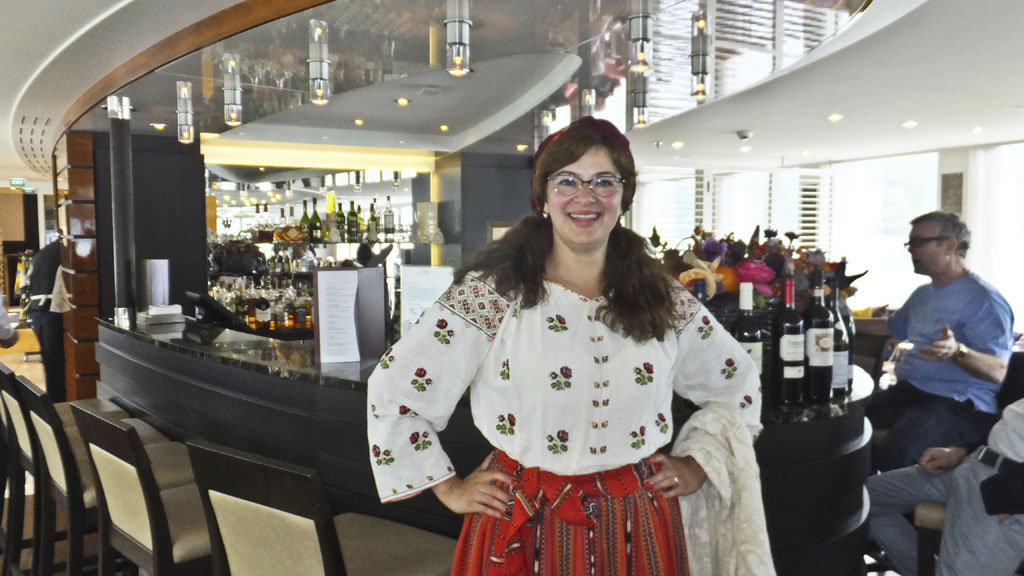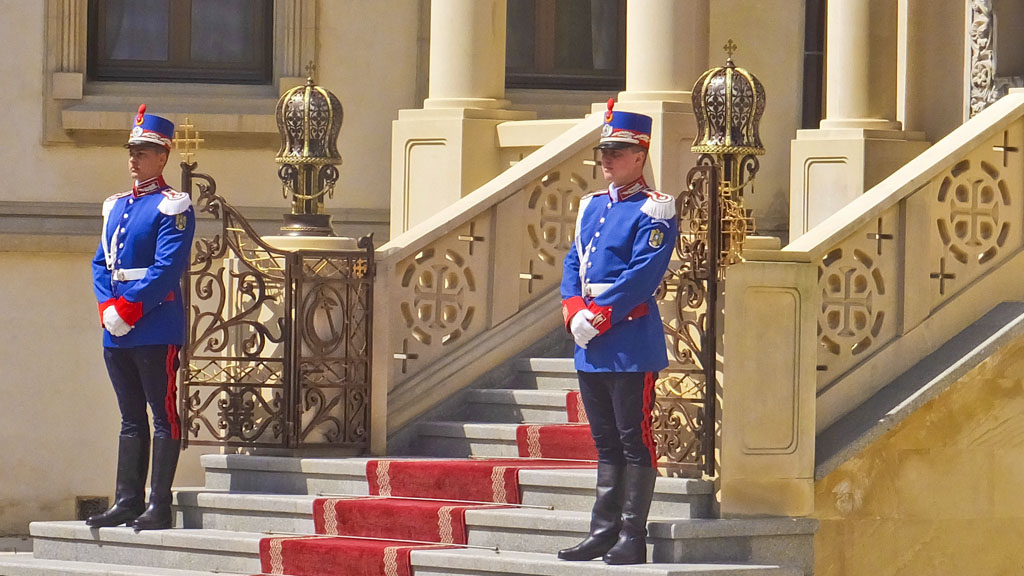
The Iron Gates: They sound so formidable, but these days you can lighten up. Passing through them becomes a party.
The name of the treacherous and narrow gorge on the lower Danube stems from the daunting challenge it posed to early would-be invaders in eastern Europe. The swift current and sheer cliffs at the border between Serbia and Romania are tough enough. Add angry, armed defenders on the cliffs and it’s a shut-out.
Reaching the Gates marks the beginning of the second half of our Lower Danube journey from Budapest to the Black Sea and it’s a momentous day on our cruise on AmaWaterways’ new AmaSonata.
Drawing Back the Iron Curtain
Everyone heads outside cocktails in hand as the ship passes Golubac Fortress, the entrance to the Iron Gates gorge. Perched on a cliff, its fortifications look a lot like part of the Great Wall of China. High on another seemingly inaccessible cliff nearby is an Orthodox monastery complete with ornate onion domes–and hopefully an elevator to reach it.
The history of conquest goes a long way back here. Where the river is at its narrowest point, the Roman emperor Trajan managed to build a temporary bridge in the second century A.D. The Imperial army used the route to conquer Dacia, later to be known as Romania and Transylvania, and a Roman plaque carved in the rock commemorates the feat.
In answer, on the Romanian bank, a modern artist recently carved a fearsome likeness of Trajan’s Dacian opponent: Decebalus in a towering cliff-side.
Decebalus’ name translates as “the strength of 10.” Sadly, he was outnumbered even at 10 to one.

Victims and Visions in Bulgaria
The first sight you see at Vidin, AmaSonata’s next stop, is a Monument to the Victims of Communism. And it appears that one of the prime victims of the era that put ideology ahead of individual achievement was the city itself.
The few cars there are on the streets seem as elderly as many of the people on the sidewalks. Here’s where old Ladas and Soviet-era trucks go to live out their final days. Years of neglected maintenance and lack of an economy has left many shops empty, with their once-decorative facades crumbling.Yet faded as it is, Vidin has a charm and staunch hope for brighter days ahead. Numerous posters for stage comedies and dance parties share the lamp posts with death notices.
This isn’t a day for shopping. But it’s an excellent opportunity to explore the beautifully scenic areas around the city. You can choose to do a complimentary bike tour on your own or take one of a series of guided tours offered for AmaSonata guests to the nearby town of Belogradchik.
Its name means “small white town” and the hills surrounding it are studded with fantastic rock formations created by erosion of soft limestone into shapes that have been given fanciful names of the animals or legendary heroes they resemble. There’s also a cave resplendent in prehistoric cave paintings.

Hey Baba Vida!
All the tours in Vidin end at the Baba Vida Fortress, which has a sweeping clifftop view of the Danube.
It’s the best-preserved castle in Bulgaria–built in the tenth century on top of the ruins of a Roman tower that goes back to the first century. Through its history, it’s been captured and ruled by invaders including the Hungarians and the Ottomans, the latter of whom thought so little of it they used it as a munitions store and prison.
And thereby hangs a tale that AmaWaterways guests are treated to at the end of their tours. Local actors in historic costumes perform a re-enactment within the castle’s prison of a momentous feud between two rival brothers who ruled parts of Bulgaria.
As the Ottoman armies arrived in 1396 the brothers let their personal differences get in the way of uniting their forces against the invading Ottomans at Vidin. While the play is all done in Bulgarian, the plot is easy to follow.
It ends as we all know by now, with the surly turbaned usurpers taking over the castle. The moral is: united we stand, divided we’re destined to fail miserably.
Could this offer a more contemporary lesson for the folks in Britain and the European Union?

Roaming Around Bucharest, Romania
The beautifully ornate streets of Romania’s capital would be even more impressive if it hadn’t been for the decision to build the monumentally brutalist Palace of the Parliament right in the middle of its classical old center.
The dream (or what others have called a nightmare) building championed by Nicolae Ceausescu– Romania’s Communist leader until 1989– is second only to the Pentagon in terms of scale. The construction required evicting 40,000 people from their homes and trashing a vast part of the city’s heritage, including monasteries and schools. Construction that started in 1984 was projected to take two years, but stretched to more than six years and was never finished.
Even though it houses Romania’s senate and chamber of deputies and has lots of meeting space for conventions, more than half of the 1,100 rooms in the building are empty. It can be just as impressive to view from a distance, so Ama’s complimentary tours offer an inside and outside option.
If you opt to go in, the spookiest is the underground bunker eight levels underground built to withstand a direct hit by an atomic bomb.

Is it over so soon?
A gala complimentary lunch hosted by AmaWaterways is a fitting end to the trip through the Iron Gates and the former Iron Curtain. It’s laid out in the ballroom of the Plaza Athenee Hilton in Bucharest, a grand hotel whose history sounds straight out of a Cold War thriller.
The lobby is filled with photos and descriptions of the wartime intrigues that saw British intelligence and Gestapo agents spying on each other while offering each other toasts at the hotel bar, pretending to be tourists.
Things actually got worse when the Communists took over. Every room and phone in the hotel was notoriously bugged and the staff consisted of paid informers—down to maids who photographed every document in guests’ rooms.
We’re assured by the hotel’s current owners that–of course–things have changed for the better since.
Hopefully, what happens in Bucharest today stays in Bucharest.





